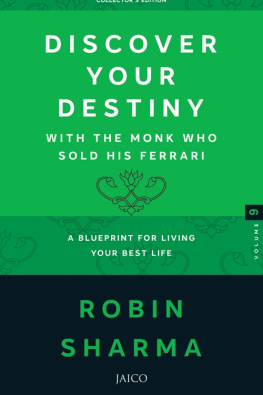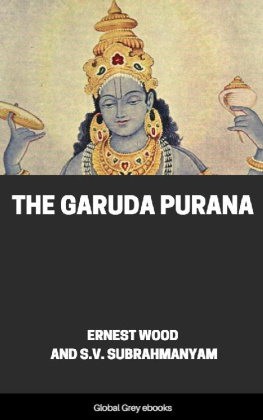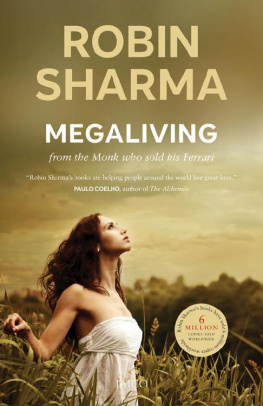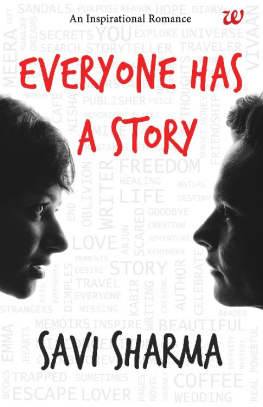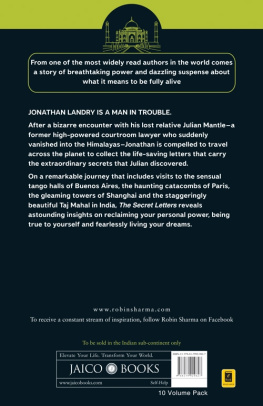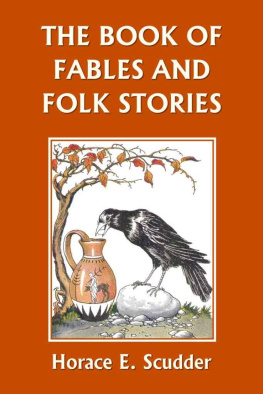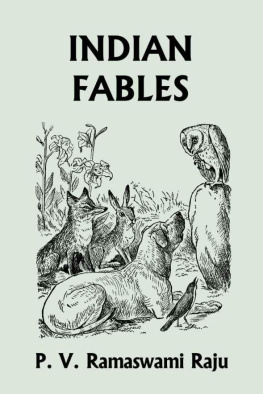Introduction
Strange things, stories. They seem so harmlesswords on a page, pinned flat in a book. You would laugh if someone said to you, Stories are alive, did you know? As alive as you, or meand be careful around them, theyre older than us.
But its true. Many years ago, I read the stories in the Panchatantra for the first time. I swear Id never read about Sanjivaka the bull and Pingalaka the lion, or about the jackal and the drum, or the dainty little mouse-maiden before. Halfway through, I felt my neck prickle with a creepy sense of familiarity. I hadnt read these ancient stories, written centuries ago, in printbut I knew them already.
There are two explanations for this. Because the Panchatantra is so famous, one explanation, the easy one, is that I had overheard someone telling someone else these stories. This was in the days before everyone had a television set at home, so people had a lot of different ways to fill the evening hours. They sang songs, the sensible ones went out and climbed trees, and the others stayed home and told stories.
So yes, its always possible that I had heard them before, perhaps even seen paintings from the Panchatantra in some friends house, but forgotten that I had heard or seen these very old stories. That must be why I felt I knew them. Except that I was the kind of child who liked stories a lot. I forgot peoples faces, often. I forgot my homework (all right, sometimes that was on purpose). I forgot to eat my breakfast (not when it was yummy, though). But I never forgot song lyrics, or books I had read, or stories I had heard. Never ever.
There is another possibilitythe second explanation. If you believe, really believe, that stories are alive, then I must tell you also that the older a story is, and the longer its lasted, the more powerful it becomes. This is not so hard to believe. Storytelling and writing are magic. You take the same twenty-six letters of the alphabet everyone gets, and you make something that will live inside peoples heads for a very long time indeedthat is magic, making something out of nothing. So, old stories, the kind that have lived in the heads of many humans, across many centuries, for longer than we can imagine, carry the most potent magic of all. The truly magical stories, the old ones, the unforgettable ones? Maybe, just maybe, they already live inside your head. Youre shaking your head right now, thinking, Mmm-hmmm, nope. Not in my head, they dont.
But consider this. The Panchatantra is very, very old. No one knows exactly how old, but some experts whove spent years studying manuscripts and storytelling and other important subjects, think that Pandit Vishnusharma might have written it in the third century CE . Thats a lot of centuries. Now consider this, too: you have roughly four human generations in each century. I hope you like maths, because this is a fun exercise that you can do on your owncount the number of centuries between our time and the third century CE , and multiply by four. That big number youre looking at? That is the number of human generations the Panchatantra has reached over time.
Stories are alive, fiercely so. No one knows why one cycle of storiesmaybe something that the Neanderthals told each other under a star-filled skysplutters out in one generation, never crossing over to other centuries. No one knows why these stories from the third century CE to ours have survived, what makes them special enough to be read, and remembered, and rewritten by one generation of humanity after another. Once you believe that some stories have a powerful life-force, heres the other thing that becomes apparent: some stories like to travel.
***
One of the most beautiful illustrated pages Ive seen comes from an ancient manuscript called Kalila-wa-Dimna. It shows a rocky but beautiful landscape, with trees and shrubs and pretty flying birds above the grey rock. Inside the stone, cut away by the clever painter, encased in velvet under-the-ground blackness, lies a beautiful red jackal, Dimna, reaching out his paws to his brother, Kalila, asking to be freed from his imprisonment. It is known as Calila e Dimna in Castile, and is read around all of the Arab world in Urdu, Persian and other languagesthe two jackals, Kalila and Dimna, are from the Panchatantra, and take centrestage in these retellings. How did two jackals from India sail across to the Arab world, taking these tales with them?
In a few hundred years, the Panchatantra had acquired a reputation. Across the traders routes, carried by caravans and spice merchants, shipped along with other cargo, the Panchatantras fame had started to spread. The king of kings, Anushirwan the Just, who ruled over the Sassanian Empire in Iran around 501579 CE , heard from travellers of these Sanskrit tales from India. It was said that these stories would teach rulers wisdom, cunning and more. Anushirwan sent his physician-vizier, Barzoi, to bring back medicines from Indiaalong with the equally powerful medicine embedded in these tales. From Sanskrit, the old stories found their way into the Iranian language of Pahlavi.
A powerful lesson: books are fragile, paper is easily lost, manuscripts can be destroyed, what you write on the Internet cant be found five years from now. But stories have a way of survivingagainst the odds, as empires rise and fall, and the centuries pass, and ancient libraries are lost, these stories stayed alive.
Ive never been very comfortable with the animals in the Panchatantra. They speak and think like humans, and they make evil plans or extract revenge like humans. But why didnt the author just write human stories, then?
Because the Panchatantras jackals and lions, bulls and monkeys, swans and owls dont need to be all that bird-or-animal-likesince they are creatures from fable, meant to be neither human, nor animal. And fable is a completely different country. Its where you put the stories that float between the world of the forest and the kingdomor in our times, city and the wilderness.
Animals in fables are like usfriendly, curious, generous, but also greedy, cunning, jealousbut with their wild side exaggerated, so that in them, we can see more clearly that human is just another animal in the forests of the world. The animals in the Panchatantra are not like any animal I know, and Ive made friends with plenty in my lifetimebut that forest they occupy?its very familiar, as beautiful and as filled with hidden dangers as any city you know.
The fable forest has troubles, and pitfalls, and old wells and rivers that contain lions and crocodiles. Stories tumble out from every corner in fables, teaching you how to stay alive in the jungle, whom to make friends with, how to survive, and sometimes, how to be good and generous while you do all of this.


